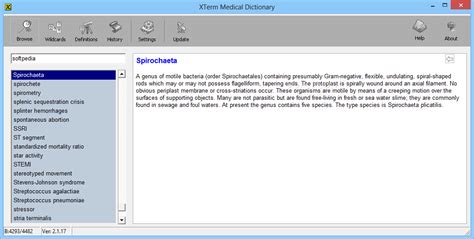Switching cpu
Author: h | 2025-04-24

In addition, process switching has the initiative to give up the CPU switch, there are also time slices are switched after running out. CPU hyperthreading switch: the lightest, occurs inside the CPU, OS, applications can not sense.

DNA switch panel or CPU
Another one arrives in the ready queue, which has a comparatively higher priority of completing its assigned task using the system’s CPU. In this case, we used context switching such that it switches the currently running process with the new one that requires the CPU to finish its assigned tasks. When a process is switching, the context switch saves the old process’s status in registers. Whenever any process reloads into a CPU, it initiates the process execution in which the new process intercepts the old process. In case we don’t save the process’s state, we have to begin its execution at its initial level. This way, context switching helps an OS to switch between the given processes and reload or store the process.Context Switching TriggersHere are the triggers that lead to context switches in a system:Interrupts: The CPU requests the data to be read from a disk. In case there are interrupts, the context switching would automatically switch a part of the hardware that needs less time to handle the interrupts.Multitasking: Context switching is the characteristic of multitasking. They allow a process to switch from the CPU to allow another process to run. When switching a given process, the old state gets saved so as to resume the execution of the process at the very same point in a system.Kernel/User Switch: It’s used in the OS when it is switching between the kernel mode and the user mode.What is the PCB?PCB refers to a data structure that is used in the OS to store all the data-related info to the process. For instance, whenever a process is formed in the OS, the info of the process is updated, information about the process switching, and the process terminated in the PCB.Steps of Context SwitchingSeveral steps are involved in the context switching. In addition, process switching has the initiative to give up the CPU switch, there are also time slices are switched after running out. CPU hyperthreading switch: the lightest, occurs inside the CPU, OS, applications can not sense. CPU. The CPU on which the context switch occurred. CPU Usage (ms) The CPU usage of the new thread after the context switch. This is equal to the NewInSwitchTime, but is displayed in milliseconds. IdealCpu. The ideal CPU selected by the scheduler for the new thread. LastSwitchOutTime (s) The previous time that the new thread was switched out All switch chips have a special port that is called switchX-cpu, this is the CPU port for a switch chip, it is meant to forward traffic from a switch chip to the CPU, such a port is required for management traffic and routing features. Switch OS User Manual (www.mellanox.com → Products → Switch Software → Mellanox Onyx or MLNX-OS InfiniBand) Switch OS software packages include the switch firmware and the CPU software for the specific switch board CPU (x86 or PPC). Installing the CPU software also automatically installs the embedded firmware. Hardware Context Switching. Some CPU's have a special mechanism to perform context switches in hardware. The following information gives details on 80x86 CPU's only. The hardware context switching mechanism (called Hardware Task Switching in the CPU manuals) can be used to change all of the CPU's state except for the FPU/MMX and SSE state. The process of context switching involves the storage of the context/state of a given process in a way that it can be reloaded whenever required, and its execution can be then resumed from the very same point as earlier. It is basically a feature of the multitasking OS, and it allows the sharing of just a single CPU by multiple processes.In this article, we will look more into the Context Switching in OS according to the GATE Syllabus for (Computer Science Engineering) CSE. We will read ahead to find out more about it.Table of ContentsWhat is Context Switching in OS? Why Do We Need Context Switching? Examples of Context Switching Context Switching Triggers Steps of Context Switching Context switching refers to a technique/method used by the OS to switch processes from a given state to another one for the execution of its function using the CPUs present in the system. When switching is performed in the system, the old running process’s status is stored as registers, and the CPU is assigned to a new process for the execution of its tasks. While new processes are running in a system, the previous ones must wait in the ready queue. The old process’s execution begins at that particular point at which another process happened to stop it. It describes the features of a multitasking OS where multiple processes share a similar CPU to perform various tasks without the requirement for further processors in the given system.Why Do We Need Context Switching?Context switching helps in sharing a single CPU among all processes so as to complete the execution and store the status of the system’s tasks. Whenever the process reloads in a system, its execution begins at the very point in which there is conflict.Here are some of the reasons why an OSComments
Another one arrives in the ready queue, which has a comparatively higher priority of completing its assigned task using the system’s CPU. In this case, we used context switching such that it switches the currently running process with the new one that requires the CPU to finish its assigned tasks. When a process is switching, the context switch saves the old process’s status in registers. Whenever any process reloads into a CPU, it initiates the process execution in which the new process intercepts the old process. In case we don’t save the process’s state, we have to begin its execution at its initial level. This way, context switching helps an OS to switch between the given processes and reload or store the process.Context Switching TriggersHere are the triggers that lead to context switches in a system:Interrupts: The CPU requests the data to be read from a disk. In case there are interrupts, the context switching would automatically switch a part of the hardware that needs less time to handle the interrupts.Multitasking: Context switching is the characteristic of multitasking. They allow a process to switch from the CPU to allow another process to run. When switching a given process, the old state gets saved so as to resume the execution of the process at the very same point in a system.Kernel/User Switch: It’s used in the OS when it is switching between the kernel mode and the user mode.What is the PCB?PCB refers to a data structure that is used in the OS to store all the data-related info to the process. For instance, whenever a process is formed in the OS, the info of the process is updated, information about the process switching, and the process terminated in the PCB.Steps of Context SwitchingSeveral steps are involved in the context switching
2025-04-21The process of context switching involves the storage of the context/state of a given process in a way that it can be reloaded whenever required, and its execution can be then resumed from the very same point as earlier. It is basically a feature of the multitasking OS, and it allows the sharing of just a single CPU by multiple processes.In this article, we will look more into the Context Switching in OS according to the GATE Syllabus for (Computer Science Engineering) CSE. We will read ahead to find out more about it.Table of ContentsWhat is Context Switching in OS? Why Do We Need Context Switching? Examples of Context Switching Context Switching Triggers Steps of Context Switching Context switching refers to a technique/method used by the OS to switch processes from a given state to another one for the execution of its function using the CPUs present in the system. When switching is performed in the system, the old running process’s status is stored as registers, and the CPU is assigned to a new process for the execution of its tasks. While new processes are running in a system, the previous ones must wait in the ready queue. The old process’s execution begins at that particular point at which another process happened to stop it. It describes the features of a multitasking OS where multiple processes share a similar CPU to perform various tasks without the requirement for further processors in the given system.Why Do We Need Context Switching?Context switching helps in sharing a single CPU among all processes so as to complete the execution and store the status of the system’s tasks. Whenever the process reloads in a system, its execution begins at the very point in which there is conflict.Here are some of the reasons why an OS
2025-03-30Would need context switching:The switching of a given process to another one isn’t directly in the system. Context switching helps an OS switch between multiple processes to use the resources of the CPU for accomplishing its tasks and storing its context. The service of a process can be resumed at the same point later on. In case we don’t store the data or context of the currently running process, this stored info may be lost when switching between the given processes.In case a high-priority process is falling in a ready queue, the process running currently would be shut down/stopped with the help of a high-priority process for completing its tasks in a system.In case a running process needs various I/O resources in a system, another process will switch the current process if it wants to use the CPU. And when it meets the I/O requirements, the previous process would go into a ready state so that it can wait for the CPU execution. Context switching helps in storing the process’s state to resume the tasks in an OS. Else, the process has to restart the execution from the very initial levels.In case an interrupt occurs when a process runs in an OS, the status of the process is saved as the registers using context switching. After the interrupts are resolved, the process would switch from a wait to a ready state so as to resume its execution later at the very same point at which the OS interrupt occurs.Using context switching, a single CPU can simultaneously handle various process requests without requiring any additional processors.Examples of Context SwitchingSuppose that numerous processes get stored in a PCB (Process Control Block), and a process is in its running state for the execution of its task using the CPUs. As this process runs,
2025-04-20